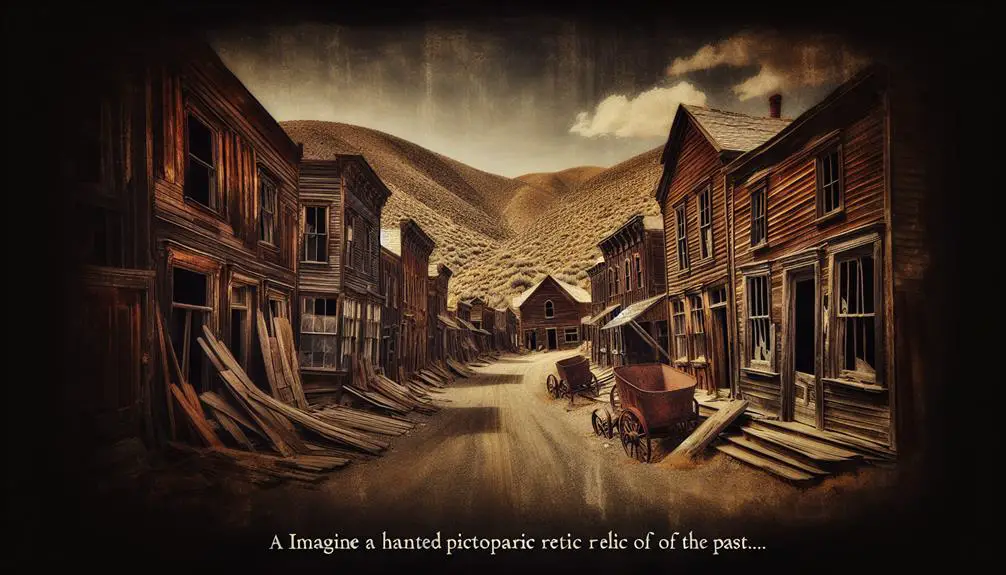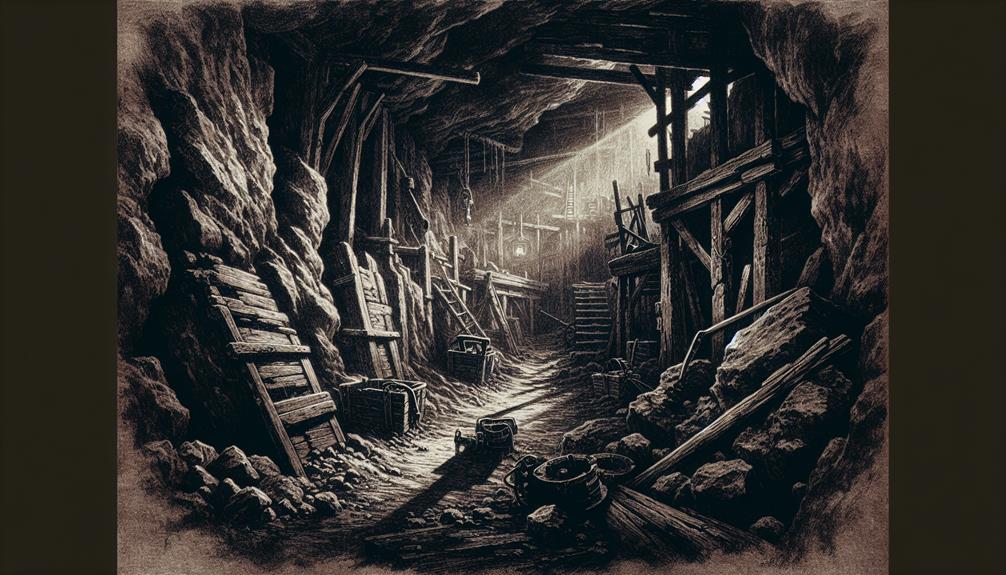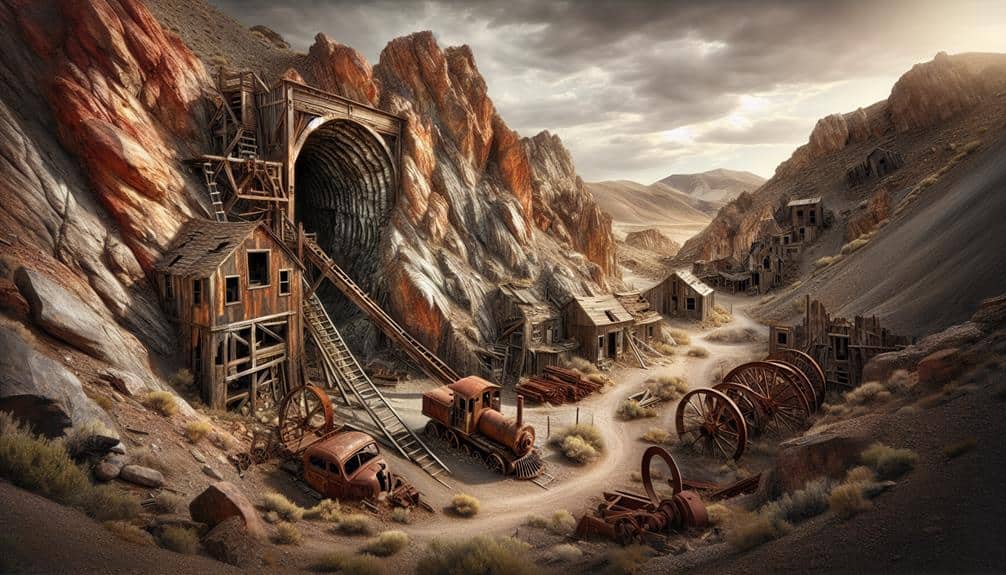To preserve Nevada's declining mining ghost towns, a careful balance is needed between conserving history and meeting modern mining needs. This involves tackling environmental risks while protecting the heritage that shapes the state's identity. Factors like economic changes and evolving mining practices contribute to the decline, while modern mining techniques pose challenges to historical site preservation. Strategies such as sustainable tourism and community involvement can help sustain these towns. By safeguarding these sites, you not only protect cultural heritage but also gain insight into the lives of past miners and settlers. Understanding these challenges and successes is crucial to securing Nevada's historical legacy.
Key Points
- Implement sustainable tourism practices to protect historical sites.
- Engage community in decision-making for preservation efforts.
- Focus on heritage tourism to showcase unique history and culture.
- Promote responsible tourism to minimize negative impacts.
- Generate revenue for conservation to ensure long-term preservation.
Factors Contributing to Population Decline
Factors contributing to the population decline in Nevada's mining ghost towns are mainly economic in nature, driven by shifts in industry demands and technological advancements. Economic changes, such as the decline in the demand for certain minerals, have led to the abandonment of many structures in these towns. As mining practices evolved, the need for manual labor decreased, causing a decrease in job opportunities within these communities. The introduction of more efficient machinery and automated processes further reduced the need for a large workforce, resulting in a mass exodus of residents seeking employment elsewhere.
Abandoned structures now dot the landscapes of these ghost towns, serving as a reminder of the economic hardships that befell these once-thriving communities. The empty buildings stand as a reflection of the impact of changing economic circumstances on the population dynamics of these areas. Despite efforts to preserve these sites, the dwindling population in these mining towns underscores the lasting effects of economic shifts on rural communities.
Impact of Modern Mining Practices
Modern mining practices greatly influence the landscapes and communities of Nevada's mining ghost towns. The extensive mining activities often lead to environmental degradation, impacting the natural beauty of these once-thriving areas. Open-pit mining, heap leaching, and other modern techniques can result in soil erosion, water pollution, and deforestation, leaving behind scars on the land that are difficult to heal. The use of chemicals and heavy machinery further exacerbates these environmental impacts, affecting not only the immediate surroundings but also the broader ecosystem.
In addition to environmental concerns, modern mining practices can also contribute to community displacement. As mining companies expand their operations, residents of these ghost towns may be forced to relocate, disrupting long-standing communities and traditional ways of life. The influx of mining workers can also strain local resources and infrastructure, leading to conflicts and social challenges within the affected areas. Balancing the economic benefits of mining with the need to preserve the environment and safeguard community well-being remains a complex issue in the ongoing development of Nevada's mining ghost towns.
Challenges in Preserving Historical Sites
Preservation of Nevada's mining ghost towns faces significant hurdles when it comes to maintaining the integrity of historical sites amidst the challenges posed by modern mining practices and environmental degradation. One of the key challenges lies in balancing the need for preserving these sites with the ongoing activities of modern mining operations. The risk of accidental damage or destruction to these historical sites is ever-present, requiring careful monitoring and coordination between preservationists and mining companies.
Another challenge is the natural process of environmental degradation, which can erode structures and artifacts over time. Harsh weather conditions, such as desert winds and occasional flash floods, can accelerate this deterioration process. Preservation techniques must be adapted to combat these environmental threats, including regular maintenance, protective barriers, and controlled access to the sites.
Moreover, the financial burden of preservation efforts presents a significant challenge. Securing funding for ongoing maintenance, restoration projects, and educational programs is essential for the long-term preservation of Nevada's mining ghost towns. Collaboration between government agencies, private organizations, and local communities is vital to address these challenges and safeguard the survival of these historical sites for future generations.
Strategies for Sustainable Tourism
To enhance the long-term viability of Nevada's mining ghost towns, implementing sustainable tourism practices is vital. Sustainable tourism involves balancing economic, environmental, and socio-cultural aspects to guarantee the preservation of these historical sites for future generations. One essential strategy is community engagement, where locals are involved in decision-making processes, ensuring that tourism benefits are distributed equitably and that the town's heritage is respected.
Heritage tourism plays a significant role in sustainable tourism by focusing on the unique history and culture of the mining ghost towns. By promoting the stories of the past, visitors gain a deeper appreciation for the significance of these sites and are more likely to engage in responsible tourism practices. This approach not only preserves the authenticity of the towns but also helps generate revenue that can be reinvested into conservation efforts.
Importance of Historical Preservation
Why is historical preservation important for maintaining the identity of Nevada's mining ghost towns?
Historical preservation plays a vital role in safeguarding the rich cultural heritage and historical significance of these towns. By preserving the original structures, artifacts, and stories of the past, we can gain insights into the lives of the miners, settlers, and communities that once thrived in these areas. The physical remnants of mining operations, such as abandoned mines, old buildings, and machinery, serve as tangible connections to Nevada's mining history, offering a glimpse into the challenges and triumphs of the past.
Maintaining the authenticity of these ghost towns through historical preservation guarantees that future generations can learn from and appreciate the unique legacy of Nevada's mining industry. By protecting these sites, we honor the resilience and ingenuity of the individuals who contributed to the development of the state. Preserving the historical integrity of these ghost towns isn't just about conserving buildings; it's about safeguarding a piece of Nevada's identity for years to come.
Frequently Asked Questions
What Are Some Unique Stories or Legends Associated With Specific Ghost Towns in Nevada?
As you explore Nevada's forgotten towns, legends intertwine with reality, mysteries whisper through dusty streets. Locals' tales breathe life into abandoned homes. Preservation efforts honor the past, yet accessibility challenges loom, urging caution.
How Do Local Residents Feel About the Preservation Efforts of These Historical Sites?
Local residents appreciate the preservation efforts at historical sites. They feel a sense of pride in their community involvement. The locals recognize the importance of preserving these places for future generations, fostering a strong bond with their heritage.
Are There Any Ghost Towns in Nevada That Have Been Completely Abandoned and Are Off-Limits to Visitors?
In Nevada, some ghost towns are completely abandoned and off-limits due to safety concerns and preservation challenges. These remote locations hold historical significance but are inaccessible to visitors, intriguing tourists while safeguarding the past.
What Steps Are Being Taken to Ensure the Safety of Tourists Exploring These Ghost Towns?
To guarantee your safety while exploring ghost towns, rangers enforce strict rules. Conservation efforts safeguard these historic sites. Watch your step, honor the past, and appreciate the eerie beauty of Nevada's abandoned treasures.
How Have Changes in Transportation and Infrastructure Impacted the Accessibility of These Historic Sites?
Changes in transportation and infrastructure have greatly impacted accessibility to historic sites. Roads and bridges deteriorate, affecting environmental impact. Conservation efforts struggle due to limited resources. Improved access could boost tourism potential, bringing economic benefits to these areas.



